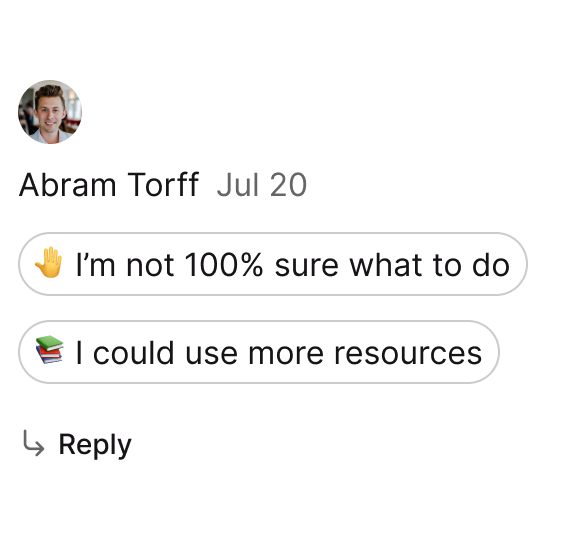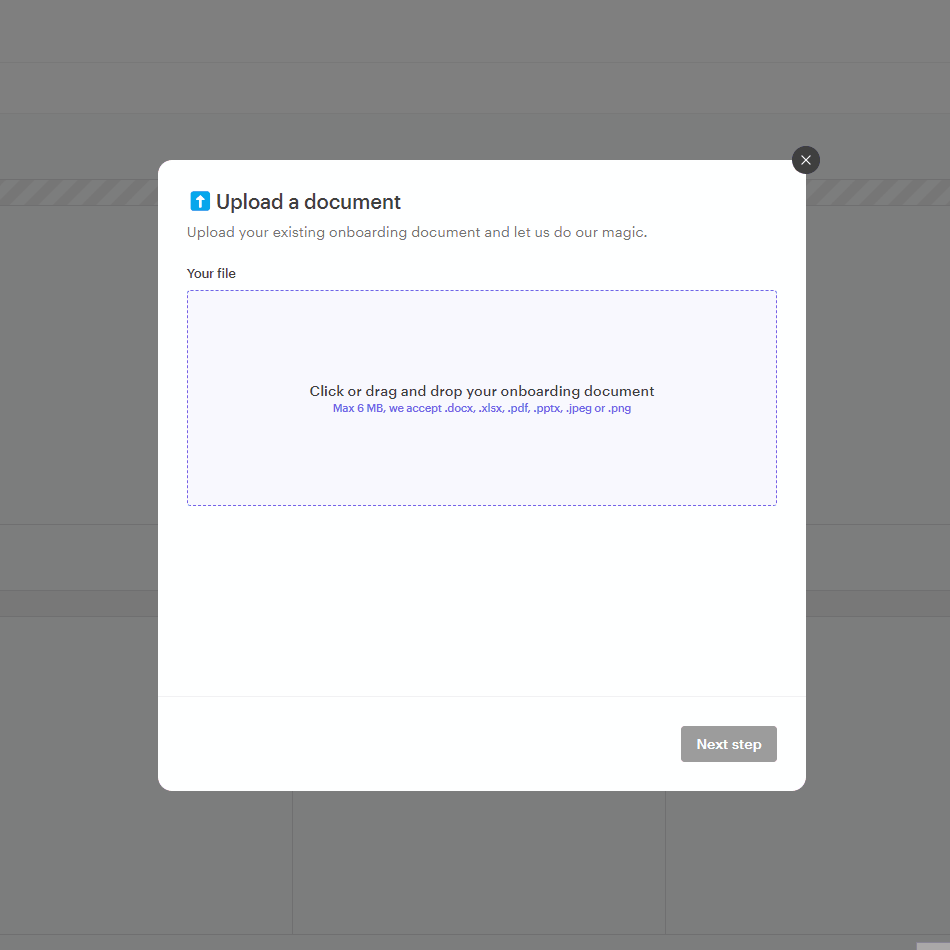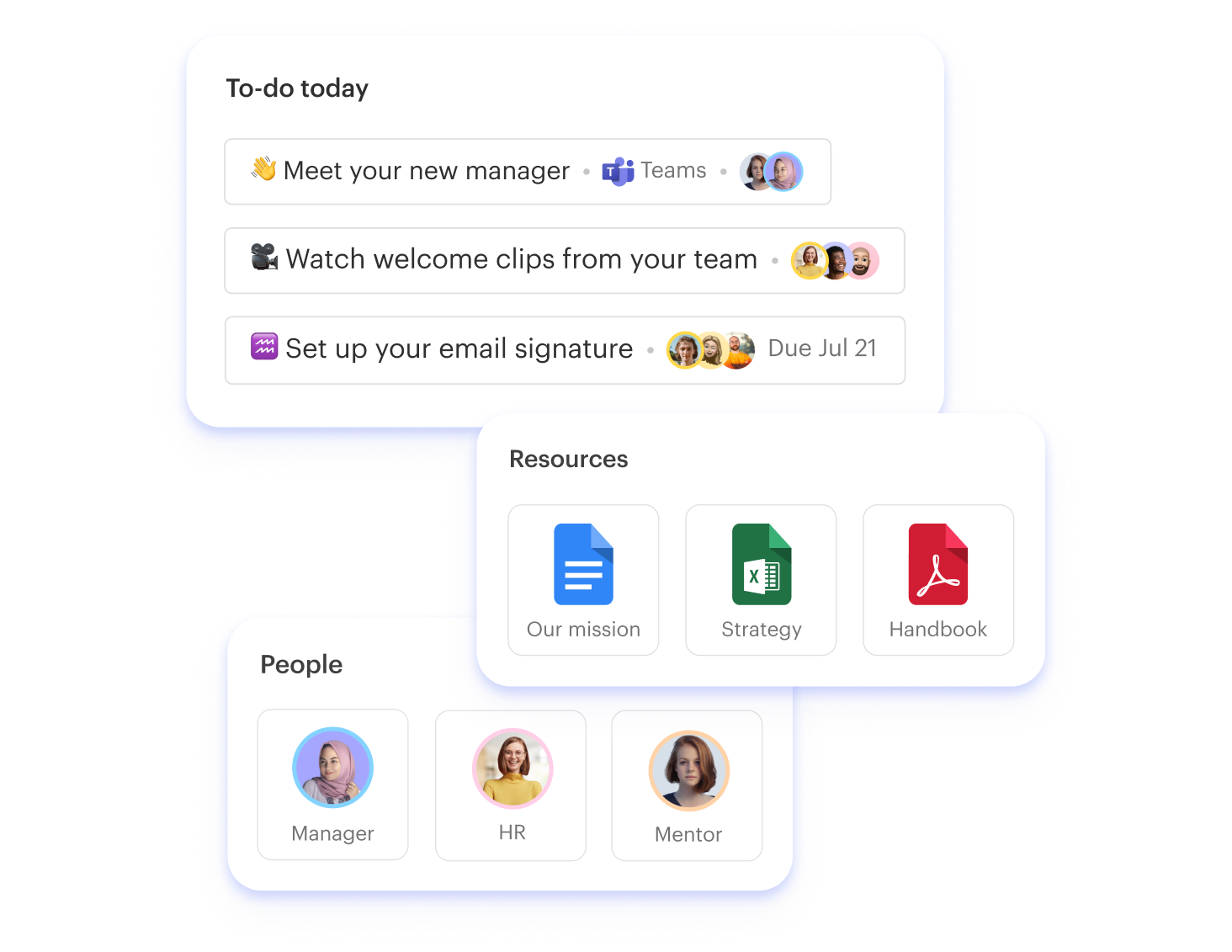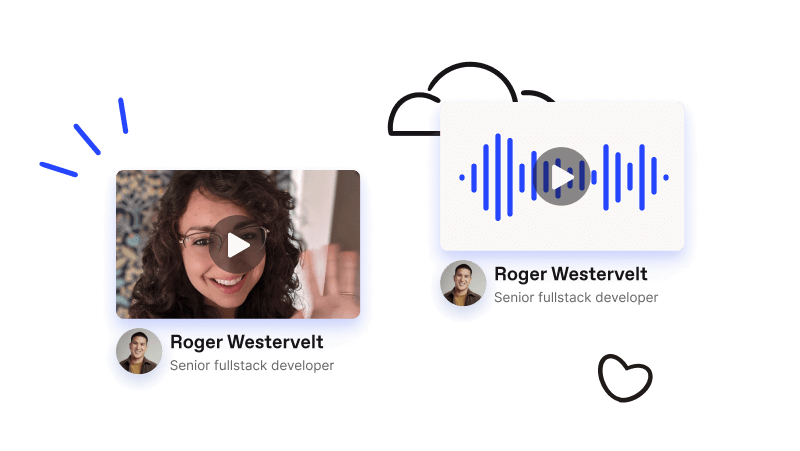As a team manager, you're no stranger to the hectic nature of your role. You navigate projects, meet deadlines, and manage team dynamics daily.
However, when new employees join your team, the dynamic shifts.
Your responsibilities jump from orchestrating introductions to handling paperwork and setting expectations. The period leading up to their arrival is a whirlwind of preparation, and those initial days are both exciting and nerve-wracking. You aim to be present and ensure newcomers' success, but the urgency of the rest of your to-do list often competes for your attention. Then, there's the admin work, sometimes scattered across Excel files and pieced together hastily. It's enough to make a person's head spin—and you're not even the one starting in the new role!
Imagine having a magic wand—a digital one—that could expertly organize it all. Onboarding templates at your fingertips that save you time and effort with each new hire. A place to connect the entire team, wherever they work, and ramp up training from day one. Welcome to the world of mastering employee onboarding, where chaos meets clarity and managers efficiently guide their new team members to hit the ground running.
What's in this article
Why employee onboarding is mission critical for managers
A good onboarding can mean the difference between managing a harmonious and efficient team or one that's struggling to find its footing. The impact ripples across the organization:
Companies with strong onboarding increase employee retention by 82% and time-to-productivity by up to 70%.
The Brandon Hall Group
As a manager, a well-structured onboarding can make or break your strategy. A high turnover means constant disruption in your team and an almost surefire miss on your yearly objectives.
Effective onboarding is not just a formality; it's a strategic investment.
Here are ten reasons why it matters:
- Improved employee satisfaction: Effective onboarding helps new employees adapt to their roles, increasing job satisfaction and engagement. When new hires feel welcomed and well-prepared, they're more motivated and committed, contributing to a positive and vibrant workplace.
- Faster time-to-productivity: Well-structured onboarding saves time and reduces the learning curve, allowing new hires to become productive more quickly. It's a shortcut to peak performance.
- Enhanced retention: Well-onboarded employees are more likely to stay with the company, reducing turnover and the related costs of recruitment and training new employees.
- Cultural alignment: Onboarding reinforces the company's culture, ensuring that new employees align with the organization's values and mission.
- Reduced managerial burden: Managers spend less time on administrative tasks, as streamlined onboarding processes automate many activities.
- Improved employee performance: Effective onboarding clarifies roles and expectations, leading to improved performance and goal attainment.
- Boosted employee morale: Onboarding contributes to positive team dynamics and fosters a sense of belonging, which boosts employee morale.
- Better communication: Onboarding encourages open lines of communication, making it easier for managers to provide feedback and address concerns.
- Cost savings: Lower turnover rates and decreased time-to-productivity result in cost savings for the organization.
- Data-driven improvements: Onboarding provides insights into the onboarding process's effectiveness, allowing for data-driven enhancements over time, which can benefit the entire organization.
The manager role in the employee onboarding process – a cheat sheet for success
As a manager, your role in the onboarding process is nothing short of crucial. Here's what you need to do to make it a success:
1. Plan ahead
Start with a well-structured onboarding plan. Define roles, responsibilities, and goals for the new hire's initial weeks. Allocate resources, schedule team introductions, and create a clear roadmap.
💡Workleap Onboarding's solution is designed to make planning a breeze. With cross-department collaboration, centralized assets, and bulk meeting scheduling, it helps you automate and streamline your planning effortlessly. Discover how it works.
2. Tailor onboarding
Recognize that one size doesn't fit all. Customize the onboarding process for each individual based on their role, skills, and career aspirations. A personalized approach can go a long way in ensuring success.
3. Communicate with clarity
Maintain open lines of communication from day one: clearly articulate job roles, expectations, and company culture. Encourage questions and provide regular feedback to keep everyone on the same page.

4. Equip with the right technology and tools
Ensure new employees can access the necessary technology, software, and tools to perform their roles efficiently. A smooth transition into the tech stack is vital.
5. Mentor and support
Assign a mentor or buddy to guide new employees through their initial days. This helps them adapt to the workplace culture, understand the company's dynamics, and feel supported.
6. Initiate learning and development
Establish a structured training program that encompasses various aspects of the job. Provide resources, training materials, and opportunities for skill development, ensuring they're well-prepared for their roles.
7. Establish a feedback loop
Set up regular check-ins and feedback sessions. Collect feedback from new employees to understand their experiences and identify areas for improvement in the onboarding process. Use insights to make data-driven changes.
8. Facilitate smooth team integration
Encourage team bonding and social interaction. Promote team members to welcome new colleagues and help them integrate seamlessly into the team. Team cohesion is key to a productive workplace.
9. Share company principles and policies
Ensure that new employees receive proper compliance training. This includes workplace safety, anti-discrimination policies, and other legal requirements. Staying compliant is not only ethically responsible but also avoids legal issues.
10. Think long-term development
Remember that onboarding is just the beginning. Help new employees set long-term goals and create a clear path for their development within the organization. The journey doesn't end after the initial training.
🗞️ Good news! You don’t have to go at this alone. Workleap Onboarding offers a solution to tackle this top 10 with ease.
How Workleap Onboarding can help
Employee onboarding software, like Workleap Onboarding, offers a lifeline to managers facing challenges during the onboarding process. Here’s how:
Build your template once. Sit back and relax.
Workleap Onboarding automates administrative tasks, reducing the time and resources required to onboard new employees manually.
Start with one of our templates. Drag and drop your existing docs, and our AI Onboarding Wizard creates a personalized plan. Or, you can start from scratch, dipping into a bank of over 120+ pre-built onboarding activities as inspiration. With a few clicks, you get a ready-to-use template to reuse and enhance over time. Ta-da! You just made onboarding so much easier for you and your team in the future.
📝 Try it out for yourself. Use the new hire onboarding template to get your newcomers up and running in no time.
These are just a few automated features that save you valuable time and allow you to focus on more personalized aspects of onboarding, such as mentorship and team integration.

Resource efficiency to the max
Say goodbye to limited documentation and missing processes. Workleap is your one-stop-shop onboarding solution that centralizes all people, roles, and assets in one place, unlocking seamless collaboration between IT, HR, and you, the hiring manager.
Painless to customize, it helps you create and organize onboarding materials, such as handbooks, training modules, and videos. Not only does having a centralized repository allow easy access to documentation (hello, hours saved!), but it also supports creating more tailored onboarding experiences that clarify expectations.

Align with team, company vision, and culture
The software encourages team collaboration and communication, helping new employees integrate seamlessly into the team. With features designed for social interaction and communication, it fosters team bonding.
When it's easy to incorporate elements of your company culture and values into the onboarding process, you make sure new hires are exposed to your organization's unique ethos and long-term objectives from day one. Here are a few ways you can do it in app:
- Include all relevant company policies and vision docs on activity checklists.
- Make the experience as personalized as possible by customizing Workleap Onboarding with your company name, logo, banner, and color.
- Use our built-in video recorder to add a human touch and make newcomers feel part of the team from day one. Camera shy? Don’t worry; there’s an audio or text-only option, too, so that everyone feels comfortable to connect.

Gather employee feedback and make data-driven improvements
Surveys, feedback mechanisms, and reactions allow you to track employee progress and engagement during onboarding, making it easier to identify and address issues early. Advanced analytics and reporting features like completion rates help you assess the effectiveness of the onboarding process and make necessary improvements.
📚 Related reading: Learn more about leveraging employee feedback to improve your onboarding process, including how to collect feedback, ask useful questions, and create a more positive experience from the very first step in the employee journey.
Step into better (and more stress-free) first impressions
Team managers are clutch in helping new employees feel welcomed, confident, and equipped in their new position with their new team at a new company. A lot of "new", right? With everything feeling like the first time, it can be a lot of information at once for a newcomer. Meanwhile, you're facing the need (and maybe pressure) to get them up and rolling—fast. It's critical to nail the onboarding process from the start.
The importance of effective employee onboarding can't be overstated. It's not just another task on your checklist; it's the key to setting the stage for your team's productivity, cohesion, and long-term success. Give Workleap Onboarding a try for yourself, and let us do the heavy lifting. We think you'll be pretty stoked with the upgrade.
